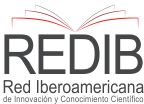New conception of the symbol: Charles Peirce's habit perspective in the semiotic analysis of culture in peruvian society
Abstract
A semiotic perspective that reconsiders the relationships between symbols, their mediation with language, and their nature is currently of interest in science. The aim of this study was to examine how symbolic mediation occurs by employing the epistemology of concepts as an analytical strategy. The design was a systematic scoping review based on, on the one hand, Charles Peirce's semiotic theory and, on the other hand, a discourse analysis through the conceptual parameterization of a symbolic corpus extracted from the cultural context of Peruvian society. The analysis relied on the concept of habit from Peircean semiotics to overcome traditional views on symbolization and thus explore the applicability of symbols in different
encoding systems. The results rejected the dominant concept of symbolic arbitrariness, as it was determined that symbols in contemporary Peruvian society depend on habitual use to establish connections between meanings and signifiers. Furthermore, parameterization was proposed as a classification method for linguistic and non-linguistic systems, opening a new horizon for future research in this area. The conclusion emphasized the indispensable role of culture in shaping types of communicative mediation, all of which deepens our understanding of the interaction between language, culture, and symbolism, and proposes a new conception of the symbol.
Downloads
References
Atkin, A. (2005). Peirce on the index and indexical reference. Transactions of the Charles S. Peirce Society: A Quarterly Journal in American Philosophy, 41(1), 161-188. Project MUSE, https://muse.jhu.edu/article/377477.
Bellucci, F. (2021). Peirce on Symbols. Archiv für Geschichte der Philosophie, 103(1), 169-188. https://doi.org/10.1515/agph-2017-0087
Bonanno, J. (2020). Communication in the Ruins: Walker Percy and the Art of Symbolic Mediation (Doctoral dissertation, Duquesne University). https://dsc.duq.edu/etd/1906/
Casas, R. (2024). Iconicidad, isomorfismo y lengua de señas. Lengua y Sociedad, 23(1), 779-791. https://doi.org/10.15381/lengsoc.v23i1.27431
Deely, J. (1990). Basics of semiotics (Advances in semiotics). Indiana University Press. https://lanlib.alzahra.ac.ir/multiMediaFile/2232123-4-1.pdf
Dover, R., McDowell, J., & Seibold, K. (1992). Andean cosmologies through time: Persistence and emergence. https://works.swarthmore.edu/alum-books/4096
Durbin, M., & Holloway, R. (1971). More on culture as a human domain. Current Anthropology, 12(3), 397-403. https://www.journals.uchicago.edu/toc/ca/1971/12/3
Eco, U. (1992). Los límites de la interpretación. Ediciones Lumen. https://monoskop.org/images/0/0f/Eco_Umberto_Los_Limites_de_la_Interpretacion_1992.pdf
Elleström, L. (2017). Bridging the gap between image and metaphor through cross-modal iconicity: An interdisciplinary model. Dimensions of iconicity, 167-190. John Benjamins Publishing Company. https://doi.org/10.1075/ill.15.10ell
Elleström, L. (2018a). A medium-centered model of communication. Semiotica, 2018(224), 269-293. https://doi.org/10.1515/sem-2016-0024
Elleström, L. (2018b). Coherence and truthfulness in communication: Intracommunicational and extracommunicational indexicality. Semiotica, 2018(225), 423-446. https://doi.org/10.1515/sem-2017-0001
Fernández, E. (2012). Peircean Habits and the Life of Symbols. Chinese Semiotic Studies, 7(1), 203-215. https://doi.org/10.1515/css-2012-0014
Hinton, L., Nichols, J., & Ohala, J. (Eds.). (2006). Sound symbolism. Cambridge University Press.
Instituto Nacional de Estadística e Informática (INEI). (2018). Censo Nacional 2017: Resultados definitivos. https://www.inei.gob.pe/media/MenuRecursivo/publicaciones_digitales/Est/Lib1544/
Kevelson, R. (1990). Peirce, Paradox, Praxis: The Image, the Conflict, and the Law.
King, K., & Hornberger, N. (2006). Quechua as a lingua franca. Annual Review of Applied Linguistics, 26,177-196. https://doi.org/10.1017/S0267190506000092
Lakoff, G., & Johnson, M. (1980). Metaphors we live by. University of Chicago press.
Loayza, E. (2020 a). La poética transcultural de José María Arguedas: Una didáctica social a través de la literatura. Tierra Nuestra, 14(1), 25-31. https://doi.org/10.21704/rtn.v14i1.1500
Loayza, E. (2020 b). Análisis semiótico del lexicón de la comida peruana amazónica. ConCiencia EPG, 5(2), 90-109. https://doi.org/10.32654/revistaconcienciaepg
Loayza, E. (2024). Estatus epistemológico de las categorías meme y memética. Una revisión sistemática. Educare et Comunicare, 11(2), 5-16. https://doi.org/10.35383
Lopez-Cortes, O., Betancourt-Núñez, A., Bernal Orozco, M., & Vizmanos, B. (2022). Scoping reviews: una nueva forma de síntesis de la evidencia. Investigación en Educación Médica, 11(44), 98-104. https://doi.org/10.22201/fm.20075057e.2022.44.22447
Luhmann, N., & Baecker, D. (2002). Einführung in die Systemtheorie (Vol. 2). Heidelberg: Carl-Auer-Systeme-Verlag. https://www.mediastudies.asia/wp-content/uploads/2016/08/Niklas_Luhmann_Introduction_to_System_Theory.pdf
Mayanza, L., & Mora, A. (2022). Sabiduría andina chakana y sus colores, una herramienta didáctica para la educación intercultural bilingüe. Diálogo andino, (67), 99-111. https://dx.doi.org/10.4067/S0719-26812022000100099
Nöth, W. (2010). The Criterion of Habit in Peirce’s Definitions of the Symbol. Transactions of the Charles S. Peirce Society, 46(1), 82–93. https://doi.org/10.2979/tra.2010.46.1.82
Peirce, C. (1958). The collected papers of Charles S. Peirce, Vols. I-VIII. Cambridge: Harvard University Press. https://colorysemiotica.files.wordpress.com/2014/08/peirce-collectedpapers.pdf
Pierce, C. (1974) La ciencia de la semiótica. Buenos Aires, Nueva visión. https://etnolinguisticablog.wordpress.com/wp-content/uploads/2017/04/peirce-ch-s-la-ciencia-de-la-semic3b3tica.pdf
Phillips, M., & Lu, J. (2018). A quick look at NVivo. Journal of Electronic Resources Librarianship, 30(2), 104-106. https://doi.org/10.1080/1941126X.2018.1465535
Pharies, D. (1985). Charles S. Peirce and the Linguistic Sign. John Benjamins Publishing Company. https://doi.org/10.1075/fos.9
Quispe, A. (2017). Wiphala, emblema de la cultura andina. https://takiruna.com/2017/01/02/wiphala-emblema-de-la-cultura-andina/
Shapero, J. (2014). Gestures in native South America: Ancash Quechua. En C. Müller, A. Cienki, E. Fricke, S. Ladewig, D. McNeill, & J. Bressem (Eds.), Body - Language - Communication: An International Handbook on Multimodality in Human Interaction, 1193-1206. Berlin, Boston: De Gruyter Mouton. http://doi.org/10.1515/9783110302028.119
Sowa, J. (2006). Peirce’s Contributions to the 21st Century. In: Schärfe, H., Hitzler, P., Øhrstrøm, P. (eds) Conceptual Structures: Inspiration and Application. ICCS 2006. Lecture Notes in Computer Science, Vol. 4068. Springer, Berlin, Heidelberg. https://doi.org/10.1007/11787181_5
Sarukkai, S. (2011). Indian logic and philosophy of science: the logic-epistemology link. Proof, computation and agency: Logic at the crossroads, 333-353. https://doi.org/10.1007/978-94-007-0080-2_18
Švantner, M., & Abrahamyan, M. (2022). Mezi skrytým a konvenčním. Kenneth Burke a teorie symbolu. Slovo a smysl-Word & Sense, 19(40), 103-124. https://doi.org/10.14712/23366680.2022.2.5
Tomasello, M. (2003). Constructing a Language: A Usage-Based Theory of Language Acquisition. Harvard University Press. https://doi.org/10.2307/j.ctv26070v8
Turner, V. (1967). The forest of symbols: Aspects of Ndembu ritual (Vol. 101). La selva de símbolos. Aspectos del ritual ndembu. Madrid, Siglo XXI, 21-52. (Trad. de Ramón Valdés y Alberto Cardin). Cornell University Press.
Webster, A. (2017). “So it's got three meanings dil dil:” Seductive ideophony and the sounds of Navajo poetry. Canadian Journal of Linguistics/Revue canadienne de linguistique, 62(2), 173-195. https://doi.org/10.1017/cnj.2017.11
Wettlaufer, A. (2003). In the mind's eye: the visual impulse in Diderot, Baudelaire and Ruskin (No. 236). Rodopi.
Whorf, B. (2012). Language, Thought, and Reality: Selected Writings of Benjamin Lee Whorf (J. B. Carroll, S. C. Levinson, & P. Lee, Eds.). The MIT Press. http://www.jstor.org/stable/j.ctt5hhbx2
Wood, W., & Neal, D. (2007). A new look at habits and the habit-goal interface. Psychological Review, 114(4), 843–863. https://doi.org/10.1037/0033-295X.114.4.843
Copyright (c) 2025 Edward Faustino Loayza Maturrano

This work is licensed under a Creative Commons Attribution 4.0 International License.
Los autores conservan los derechos de autor.
Esta obra está bajo una licencia internacional Creative Commons Attribution 4.0.
Los artículos publicados por la revista científica "Educare Et Comunicare" de la Facultad de Humanidades de la Universidad Católica Santo Toribio de Mogrovejo, Chiclayo, Perú están sujetos a una licencia internacional Creative Commons Attribution CC BY 4.0



















 BIBLIOTECA USAT
BIBLIOTECA USAT